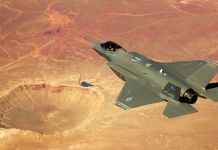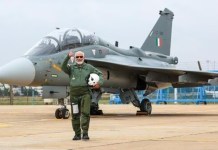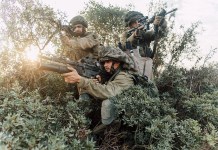In a remarkable showcase of maritime power, the Indian Navy demonstrated its impressive capabilities on June 10, displaying twin-carrier operations and deploying more than 35 military aircraft in the Arabian Sea.
Russia’s ‘New Age’ Aerial Warfare Blunts Ukrainian Counteroffensive; Russian Tech Batters Western Tech!
The Indian Navy’s aircraft carriers, INS Vikramaditya and the recently commissioned INS Vikrant, took the spotlight in the exercise. These platforms served as floating airfields for the deployed aircraft.
The Navy’s MiG-29K fighter jets, accompanied by a fleet of helicopters such as the MH60R, Kamov, and advanced light helicopters, were among the impressive array of aircraft employed in the exercise.
According to Indian Navy Spokesperson Commander Vivek Madhwal, the exercise “marks a significant milestone” in the Indian Navy’s efforts to strengthen maritime security and expand its influence in the Indian Ocean and beyond.
Commander Madhwal highlighted that the exercise seamlessly integrated two aircraft carriers with a diverse fleet of ships, submarines, and aircraft, showcasing India’s technological expertise and prowess in the maritime domain.
#BREAKING – Indian Navy’s two carriers operating together for the First time !!
Indian Navy conducts twin Carrier Battle Group (CBG) operations with over 35 aircraft, showcasing might in the Arabian Sea.#IndianNavy #ArabianSea #INSVikramaditya #INSVikrant #aircraftcarrier… pic.twitter.com/5whxr2IJnF
— EurAsian Times (@THEEURASIATIMES) June 10, 2023
The Indian Navy Spokesperson further emphasized that this display of naval prowess reinforces India’s dedication to protecting its national interests, upholding regional stability, and cultivating collaborative partnerships in the maritime sphere.
The Indian Navy, in one of the biggest demonstrations of its operational prowess, has showcased its remarkable capabilities at a time when China seeks to escalate its presence and activities in the Indian Ocean region.
Furthermore, the Indian Navy’s latest operation in the Arabian Sea unfolded just days after the MiG-29K fighter aircraft achieved a “historic milestone” by executing night landings on the indigenously-built aircraft carrier INS Vikrant.
At that time, the Indian Navy stated that the aircraft carrier would be crucial in fostering peace and stability in the Indo-Pacific region.
The latest development signifies the Navy’s commitment to enhancing its operational readiness and strengthening its maritime power, showcasing India’s expanding expertise in naval operations.
The Significance Of Twin Carrier Operations
This mega exercise marks the first instance of the two aircraft carriers operating together since the induction of the indigenously-built INS Vikrant in September 2022.
Officials highlighted that the exercise witnessed the utilization of nearly all of the Navy’s air assets, which effectively operated from the two aircraft carriers, functioning as mobile bases.
The exercise also clearly demonstrated INS Vikrant and INS Vikramaditya’s flexibility, as they can be deployed in various locations.
This enhanced positioning capability eventually enables increased mission flexibility, ensuring a prompt response to emerging threats and the ability to sustain air operations to protect national interests across the globe.
“In addition, they provide our friends with an assurance that the Indian Navy is capable and ready to support our ‘collective’ security needs in the region,” said the Navy spokesperson.
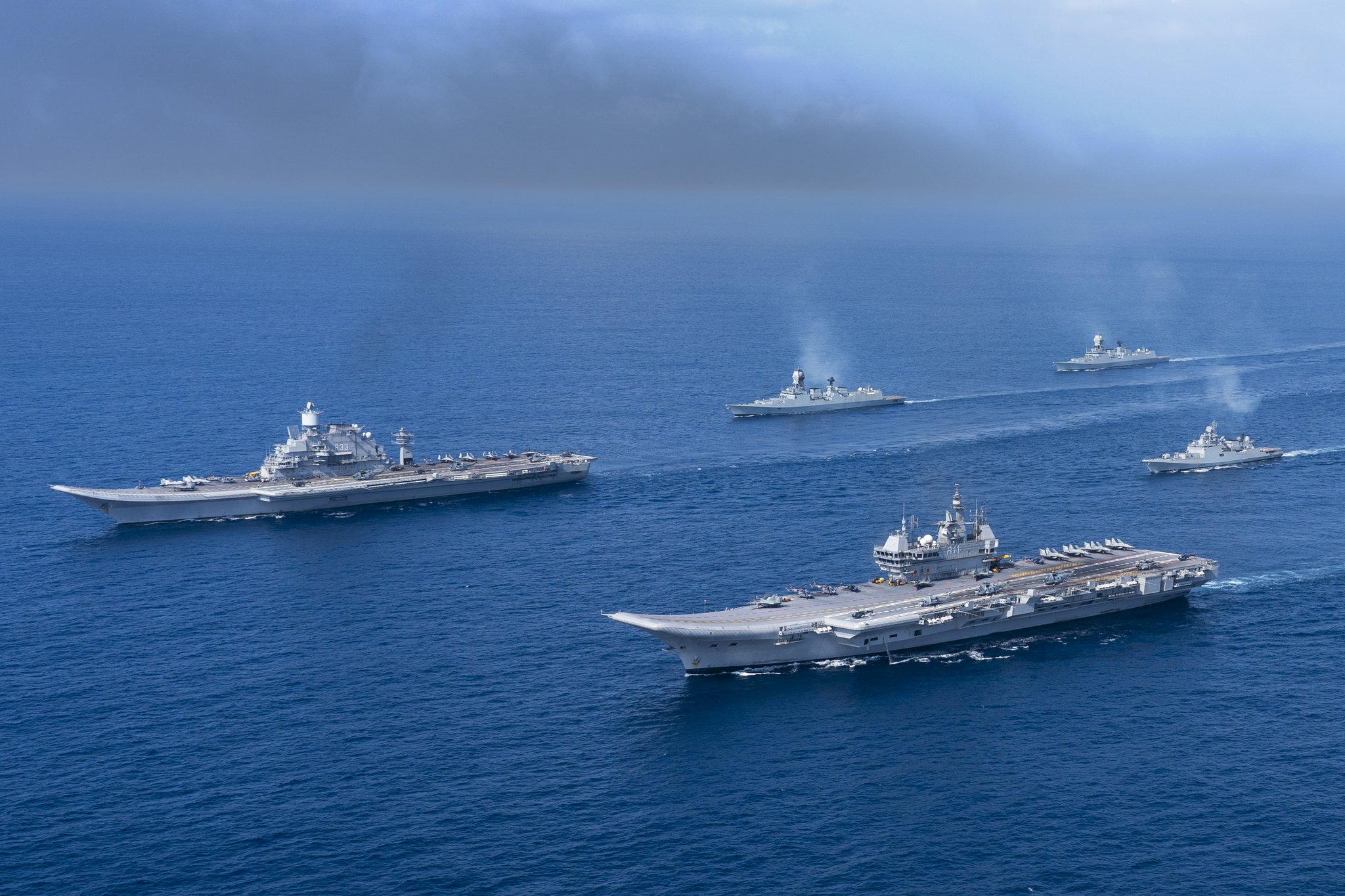
“The successful demonstration of two-carrier battle group operations serves as a powerful testament to the pivotal role of sea-based air power in maintaining maritime superiority,” he added.
Shekhar Sinha, a former Vice Admiral of the Indian Navy, noted the significant impact of aircraft carriers, stating that they greatly amplify the fleet’s operational reach, enabling the ability to observe and engage targets from afar.
Sinha further highlighted the rich history of the Indian Navy’s aircraft carrier fighter operations, which spans over six decades, indicating a “formidable” level of expertise that should concern “any potential adversary in the Indo-Pacific region.”
Alex Luck, an expert on Chinese military affairs, said that the Indian Navy has undoubtedly taken the lead over the People’s Liberation Army Navy (PLAN) in achieving the “dual carrier photo op.”
The expert added that it is worth considering this fact when forming an opinion on the PLAN’s aspirations for carrier aviation capability, suggesting that it may be driven, at least in part, by a desire for prestige rather than solely strategic considerations.
Nonetheless, dual carrier operations are challenging and require extensive coordination. Experts believe that the successful execution of such operations by the Indian Navy demonstrates their growing capabilities and highlights their ability to handle complex missions effectively.
Indian Air Force Also Makes Its Mark In The Indo-Pacific Region
On June 9, the Indian Air Force (IAF) also displayed its strength, with a fleet of Su-30MKI jets conducting a strategic mission over the Indian Ocean region for eight hours.
This comes days after a similar operation was carried out by four Rafale aircraft, highlighting the multifaceted readiness and capability of the Indian military across different branches.
The mission involving the Su-30MKI jets was efficiently supported by mid-air refueling aircraft, enabling them to fly successfully over the southwestern region of the Indian Ocean.
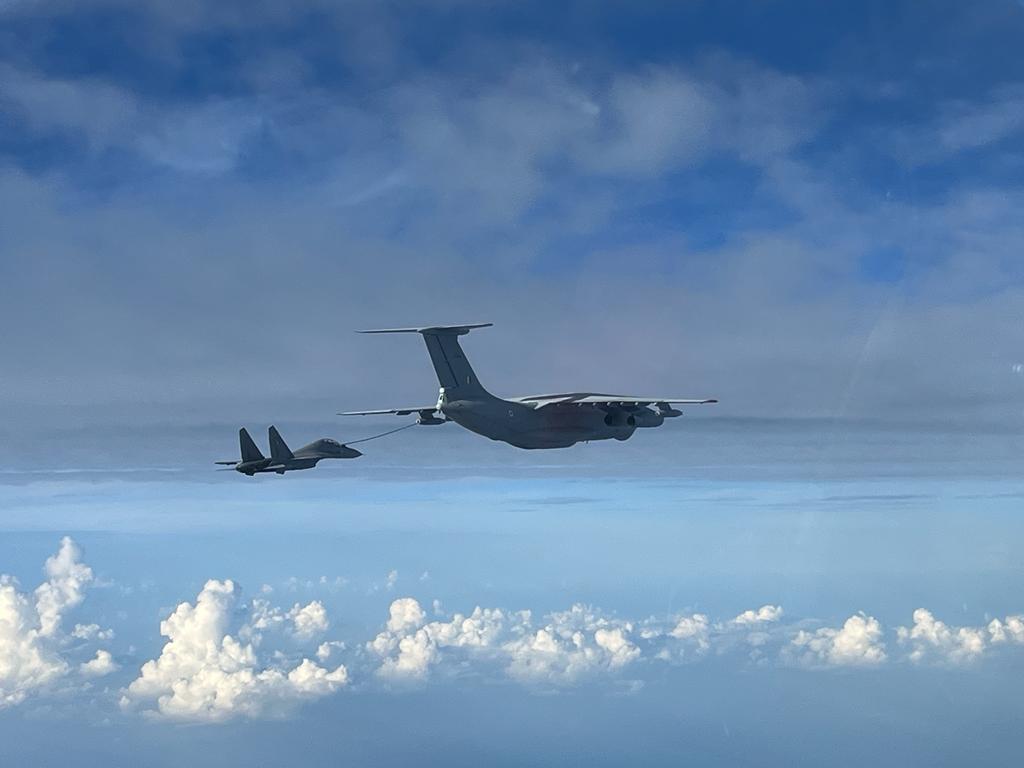
On the other hand, the six-hour mission conducted by the Rafale fighter aircraft last month covered the eastern region of the Indian Ocean.
“Another outing into the Indian Ocean Region! This time, with #IAF Su-30s flying nearly eight hours on a different axis. Both Seaboards covered,” the IAF tweeted on June 9.
The Indian Air Force (IAF) conducts these missions as China continues to increase its presence in the Indian Ocean region, the Indian Navy’s primary operational area.
Thus, with an impressive display of operational prowess, coordination, and strategic reach, Indian Navy and Air Force have demonstrated their growing capabilities and readiness to respond to emerging threats.
- Contact the author at ashishmichel(at)gmail.com
- Follow EurAsian Times on Google News


